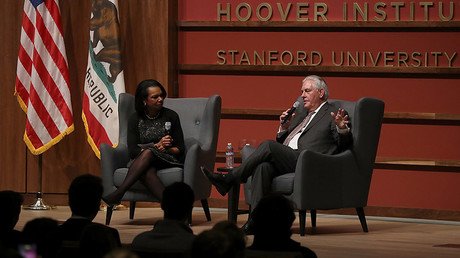False alarm fallout: Hawaii lawmakers divided over missile early warning system

Hawaiian Senator Brian Schatz says his state will work on revamping its early-warning protocols in the wake of Saturday’s chaotic ballistic missile warning.
Officials took more than 35 minutes to cancel the alert sent to mobile devices warning of an incoming missile – a lag that has revealed deep dysfunction in both state and federal responses. Speaking to the Honolulu Civil Beat, Schatz said that despite the faults in the system, neither the US Pacific Command nor any other federal agency will be taking it over.
“The federal government is not going to do this for us,” Schatz said.
The sequence of events released by the Hawaii Emergency Management Agency (EMA) shows that a standard practice test was initiated by an official at 8:05am local time. From a drop-down menu on a computer screen, the employee was given two options: ‘Test missile alert’, which sends a message internally to agency staff, and ‘Missile alert’, which sends the public message. The employee then mistakenly chose the latter, clicking ‘Yes’ to confirm the instruction.
‘I sincerely apologize’: Japan broadcaster erroneously reports N. Korea missile launchhttps://t.co/pfZWftISV8pic.twitter.com/D0orzkQcHJ
— RT (@RT_com) January 17, 2018
At 8:07am the message alerting people to an inbound ballistic missile was sent to the TVs, radios and cellphones of everyone on the island. The alert was not rescinded until 8:45am despite the director of the Hawaii EMA, Major General Arthur Logan, learning there was no missile threat in a call with US Pacific Command at 8:10am.
Writing on Twitter, Congresswoman Tulsi Gabbard was the first to declare that the alert was false at 8:19am. The Hawaii EMA then published similar posts one minute later, followed by Ige and Honolulu Mayor Kirk Caldwell. At 8:34am, the US Pacific Command said the alert had been sent in error. Lastly, Hawaii EMA used systems of the Federal Emergency Management Agency (FEMA) to send an alert to all media announcing that the previous message was sent in error.
READ MORE: ‘Very possible’ that N. Korea crisis can’t be resolved peacefully – Trump
In recent days, Schatz and his Senate colleague Mazie Hirono met with officials from the Department of Defense, FEMA and the Hawaii EMA in Washington where it was decided that, rather than take over the early warning system, federal agencies would provide examples of “best practices going forward.”
Representatives Gabbard and Colleen Hanabusa, who also attended the meeting, have now written to the House Armed Services Committee calling for an investigation into the response and asking if states should have control over their own early warning systems.
“When it comes to matters of national security, including whether a ballistic missile has been launched against the United States, one must question whether any state emergency management agency is best suited for that role," the letter read, according to the Associated Press.
Rep. Hanabusa and I have formally requested a Congressional investigation into Saturday's false missile alert. The chain of failures must be immediately corrected, and those responsible must be held accountable so that this never happens again in Hawaiʻi or anywhere else.
— Tulsi Gabbard (@TulsiGabbard) January 17, 2018
In event of a real launch, protocol states that Pacific Command would notify Hawaii State officials, who would then activate the warning system. The Hawaii EMA’s dysfunction is seen particularly troubling, as it is estimated that a ballistic missile would take about 20 minutes to reach Hawaii from North Korea.
The incident raises questions about other states preparedness in the event of an attack. As Hawaii is the only state with an early warning system, it could take mainland states as long as 30 minutes to create and send an alert. Meanwhile, a nationwide warning system for mobile devices exists, but has never been tested, David Gonzales of the RAND Corporation told AP.
Speaking about the alert from his West Palm golf club Sunday, President Donald Trump said he appreciated that the state took responsibility for the incident before hinting at further federal involvement.
“We're going to get involved,” he said. “Their attitude and their – what they want to do, I think it's terrific. They took responsibility. They made a mistake."
If you like this story, share it with a friend!















